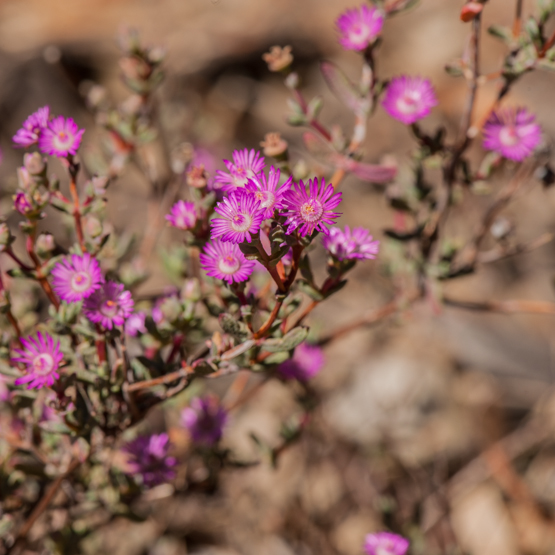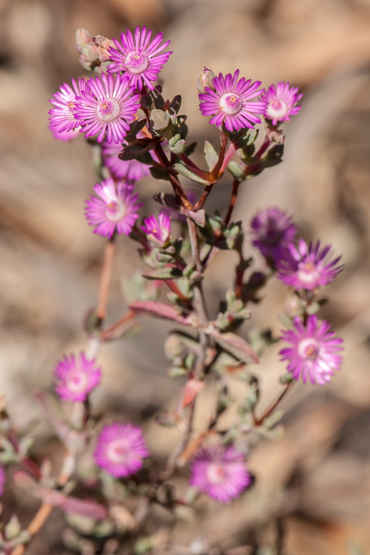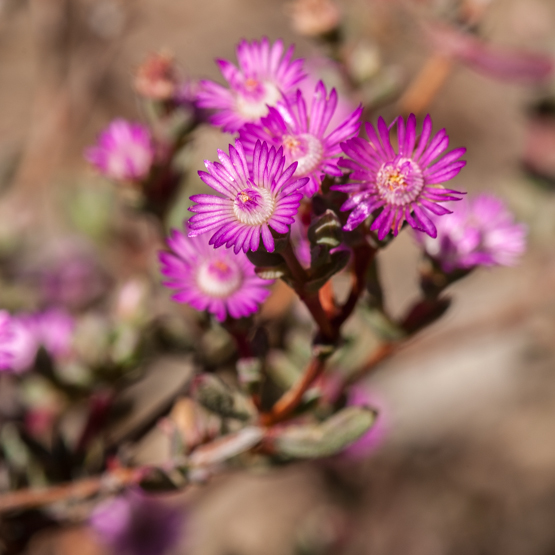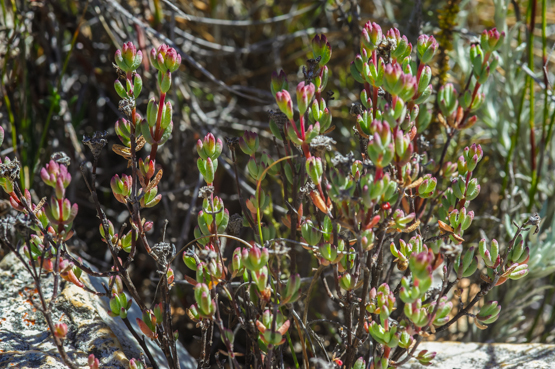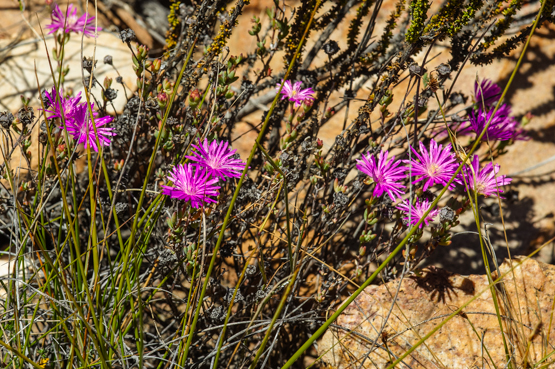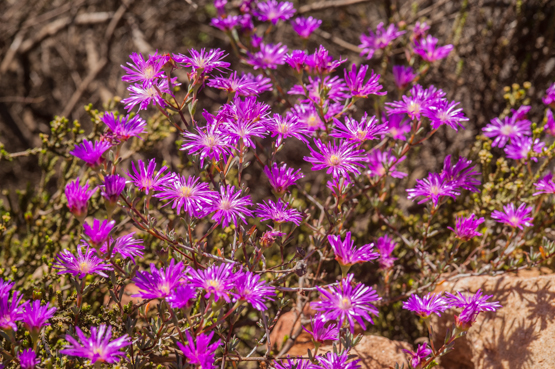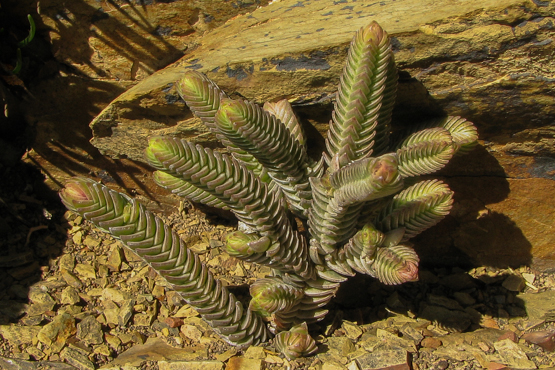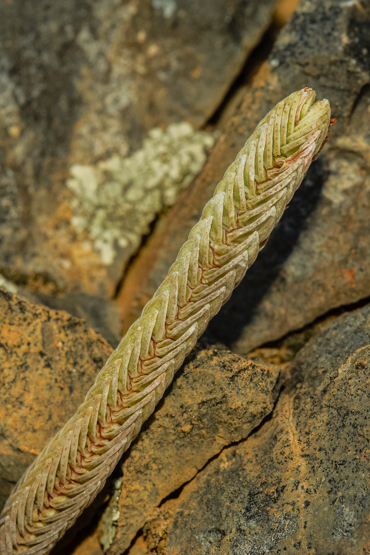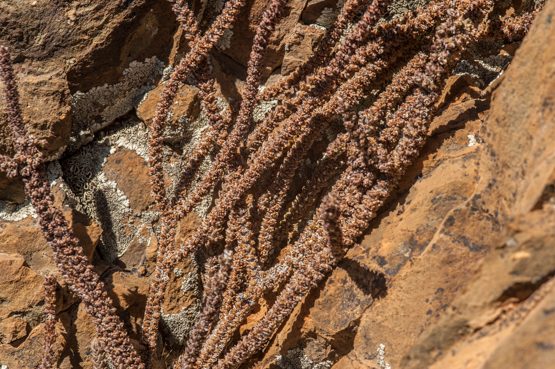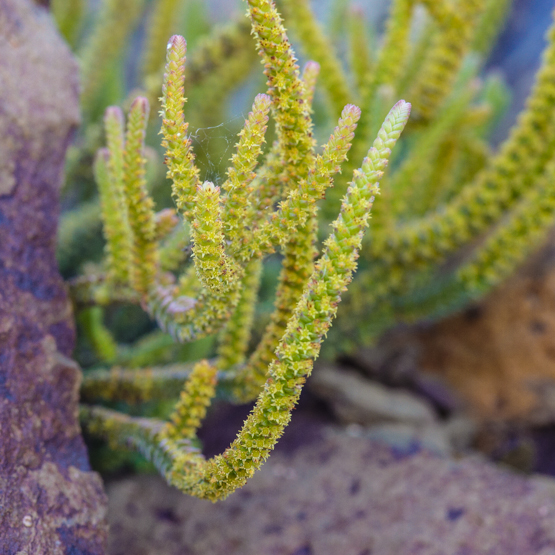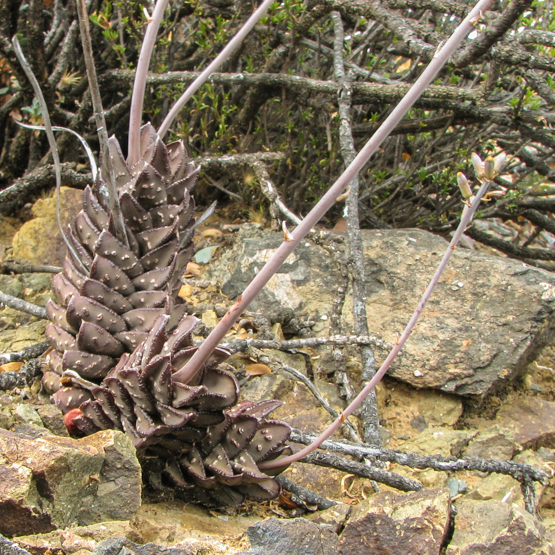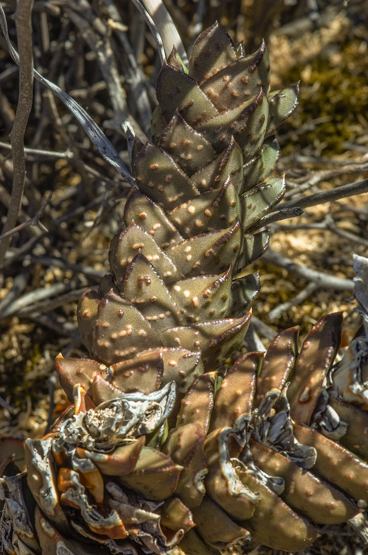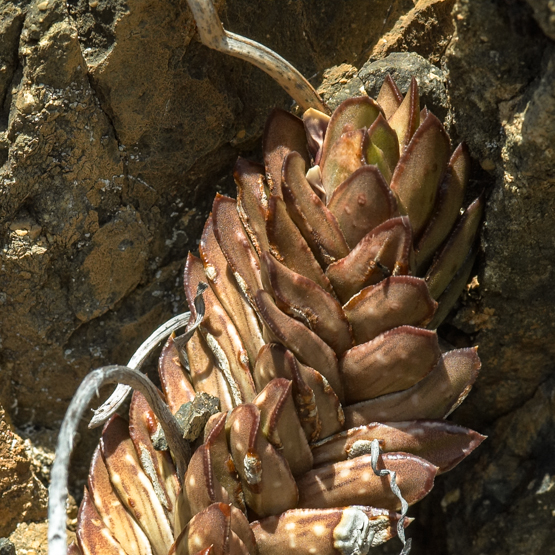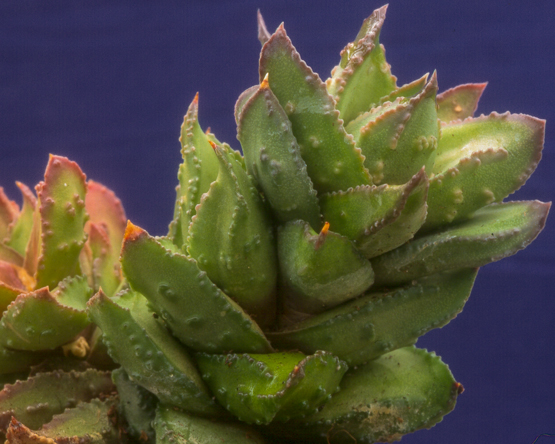These pictures were taken last Monday on the outskirts of Montagu and represent the plants that used to be called Lampranthus montaguensis.
The last one shows a plant growing in shade, thereby giving a very different, much more subdued impression.
Month: July 2014
Ruschiella argentea (1)
In 2005, Cornelia Klak set up the genus Ruschiella to accommodate a couple of species of Lampranthus.
Up to then, the subject of this post was known as either L. argenteus, L. montaguensis or L. nardouwensis. The plants are shrublets up to about 25 cm tall, with greyish green leaves 17-20 mm long. The flowers are 19-23 cm across, with white to pinkish purple petals which have a more or less distinct mid stripe.
According to literature, the species occurs from Clanwilliam to Paarl and Montagu. The pictures in this post show that plants grow much further east, around Calitzdorp, but probably also belong to this species.
Crassula muscosa var. muscosa (2)
Crassula muscosa var. muscosa (1)
The great Linnaeus himself described this species way back in 1760. The adjective muscosus means moss-like, which is certainly an apt name for some of the many guises in which this species comes.
In var. muscosa the branches are usually 20-40 cm long (sometimes up to 80 cm) and upright, creeping or scrambling. An old synonym for it is Crassula lycopodioides, referring to Lycopodium or clubmoss. This variety is found from southern Namibia to South Africa’s South coast, but is especially widespread in Namaqualand and the Great Karoo and neighbouring areas. Even within this one variety (there are four in total) one comes across a great number of different forms. In the wild the leaves are generally greyish green to brown; in cultivation one also finds other colours.
The plants often grow in very dry spots. The same thin and densely leaved branches that make them look so delicate, seem to be rather effective in condensing dew and fog and channeling this moisture to their roots.
Astroloba bullulata
Most of the time this beautiful and distinctive species is not easy to find, not only because it is rather uncommon, but also because it prefers to grow in the shelter of shrubs. It branches only reluctantly and may reach a height of 30 cm.
The attractive flowers appear from November to June.
The main distribution area is from Sutherland to Ceres and Laingsburg. A locality near Bonnievale and one near Prince Albert are also mentioned in literature.
The last picture shows a plant in cultivation.

